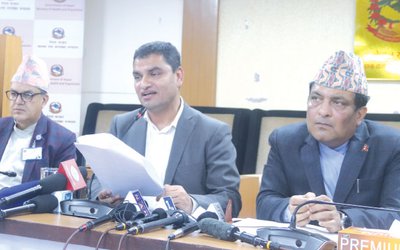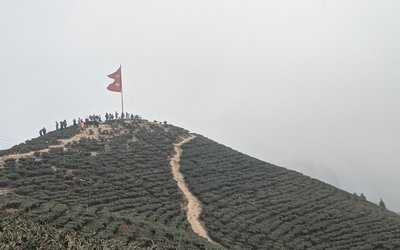When an article entitled “Diarrhea at the Summit” appeared in a medical journal, some doctors thought it was about climbers having diarrhea at the top of Mount Everest. However the article in question pertained to a summit meeting of diarrhea in travelers. But many in wilderness medicine felt the title was relevant for Nepal.
It is said that when Western travelers and trekkers to Nepal return home, there are two questions that are asked in quick successionfor which the answersare usually “yes”. Did you have a good time, and did you get sick? Sick usually means having the runs (Delhi belly, Montezuma’s revenge are other colorful terms, although for the victim these may not be very funny).
Diarrhea at the summit is a relevant topic in this fall trekking and climbing season because many trekkers and climbers on the way to the summit will suffer from gastroenteritis, another more scientific term for diarrhea. Many of these trekkers are fully compliant with the precautions that need to be taken to avoid diarrhea. These measures includefrequent handwashing with soap and water or using the alcohol- based,hand cleaning solution ( hand-sanitizers), drinking only boiled or reliable bottled water, eating steaming, hot food and generally avoiding raw salad. But these measures may not be enough.
Food handlers who will be involved in the preparation and serving of food also need to adhere to these stringent guidelines. Indeed the decrease in the rate of travelers’ diarrhea in countries like Nepal may have plateaued. One explanation is that the traveler is doing all he or she can for prevention; but for the decrease in diarrhea rates to be sustained, food handlers too may need to take proper precautions including storage and refrigeration of food supplies. With rampant power cuts in Nepal, adequate refrigeration will continue to be a problem here, especially in Kathmandu where the traveler may need to spend a few days to make arrangements for the climb or trek.
Often times helicopter rescues are deployed for travelers with severe gastroenteritis on the trail. Many a climbers’ dream of summiting the mountain has been unfulfilled because diarrhea was so severe and uncomfortable that the climb had to be abandoned. So, if both the traveler and the trekking agency staff follow stringent hygienic guidelines ( made easy now with the inexpensive, small portable hand sanitizers), the diarrhea rates will in all likelihood come down and benefit both the parties. Importantly the traveler can go home and say “yes indeed,I had a good time”, and “no,I did not fall sick”.

Buddha Basnyat MD
Buddha Basnyat, MD, MSc, FACP, FRCP, Director of the Oxford University Clinical Research Unit-Patan Academy of Health Sciences, Kathmandu.
- Altitude Sickness
- Feb 20, 2018
- Post-earthquake Nepal: The Way Forward
- Dec 13, 2015
- The Annapurna Sanctuary
- Nov 29, 2015
- Altitude Sickness ( AMS, HAPE, HACE)
- Oct 15, 2015
- Tackle Nepal’s Typhoid Problem Now
- Sep 25, 2015
















